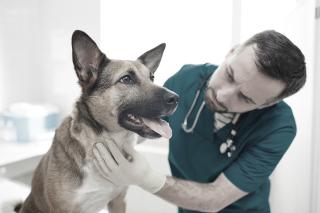Dog Oncology

As pets and humans live longer lives, many will deal with cancer personally or will know someone or a pet who has been affected. Hundreds of animals are diagnosed with cancer each day,¹ with about 1 in every 4 dogs developing cancer at some stage in their life.2
Due to advances in diagnosis and treatment, pets have a better chance of surviving a cancer diagnosis than they once did. We are committed to solutions providing innovative, yet simple options for cancer treatment.
External Resources for Further Reading:
- Understanding the biology of the Fontainea picrosperma tree
- Tigilanol tiglate Mode of Action in Mouse Models
- Dose Determination study
- U.S. Clinical Safety and Efficacy Trial
- Wound Healing
- Recurrence free interval 12 months after treatment
References:
- Veterinary Cancer Society. http://vetcancersociety.org/pet-owners/ [Accessed February 17, 2020]
- AVMA. Cancer in Pets. https://www.avma.org/resources/pet-owners/petcare/cancer-pets [Accessed February 17, 2020]
IMPORTANT SAFETY INFORMATION
FOR VETERINARIANS
Accidental self-injection of STELFONTA® may cause severe wound formation. To decrease the risk of accidental self-injection, sedation of the dog may be necessary. In dogs, do not inject STELFONTA into subcutaneous mast cell tumors located above the elbow or hock. Formation of wounds, possibly extensive, is an intended and likely response to treatment with STELFONTA along with associated swelling, bruising and pain; these wounds are expected to heal. Appropriate pre- and post-treatment medications must be given, including a corticosteroid plus blocking agents for both H1 and H2 receptors, in order to decrease the potential for severe systemic adverse reactions, including death, from mast cell degranulation. For full prescribing information, contact VIRBAC at 1-800-338-3659 or view the Product Insert.


